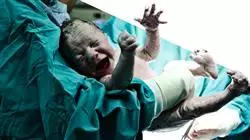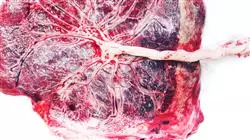University certificate
Scientific endorser
.png)
The world's largest faculty of nursing”
Introduction to the Program
Get up to date on the most important issues surrounding Obstetric and Neonatal Emergency Nursing, including vulvovaginitis, miscarriage, preterm labor, labor dystocias and urgent cesarean sections"

Emergency department work is always demanding for nurses. In addition to Obstetric Emergencies, nurses must also deal with non-obstetric pathologies, neonatal emergencies or more delicate situations such as out-of-hospital deliveries or pseudocyesis.
In order to deal with the main life-threatening emergencies of both the pregnant mother and the fetus, nurses must have access to adequate health education, which takes an up-to-date and detailed approach. With this is mind, the contents of this program are divided into the different phases of pregnancy, in order to provide a comprehensive update on the most relevant Obstetric and Neonatal Emergencies.
TECH has assembled a specialized team of nurses and midwives with extensive practical experience in the treatment of all types of obstetric emergencies. This experience distinguishes the theoretical contents of the program, which are based on the most rigorous scientific findings, enriched with clinical cases to effectively contextualize all the advances covered.
Since the work of nurses is particularly changeable and unpredictable, it is obviously complicated or even impossible to undertake a Masters Degree in a traditional format. For this reason, TECH is committed to a completely online format, eliminating both in-person classes and preset schedules. All content is available from day one in the virtual classroom and can be downloaded to any device with an Internet connection.
At TECH you decide when, where and how, adapting the pace of study and teaching load to your own responsibilities and not the other way around"
This Masters Degree in Obstetric and Neonatal Emergency Nursing contains the most complete and up-to-date scientific program on the market. Its most notable features are:
- The examination of practical cases presented by experts in Emergencies Obstetric and Neonatal
- Graphic, schematic, and practical contents which provide scientific and practical information on the disciplines that are essential for professional practice
- Practical exercises where self-assessment can be carried out to improve learning
- A special emphasis on innovative methodologies
- Theoretical lessons, questions for experts, discussion forums on controversial issues and individual reflection work
- Content that is accessible from any fixed or portable device with an Internet connection
The teaching team has created a wealth of quality audiovisual material, with real clinical examples for each of the topics covered"
The program’s teaching staff includes professionals from the sector who pour their professional experience into this Masters Degree program, as well as renowned specialists from leading societies and prestigious universities.
The multimedia content, developed with the latest educational technology, will provide the professional with situated and contextual learning, i.e., a simulated environment that will provide immersive learning designed for real situations.
This program is designed around Problem-Based Learning, whereby the professional must try to resolve the different professional practice situations that arise during the academic year. For this purpose, the student will be assisted by an innovative interactive video system created by renowned and experienced experts.
Join TECH Global University for a sound update on the most important Obstetric and Neonatal Emergencies"

You will have access to thorough theoretical and practical content, created to address obstetric complications and pathologies that arise in daily practice"
Why study at TECH?
TECH is the world’s largest online university. With an impressive catalog of more than 14,000 university programs available in 11 languages, it is positioned as a leader in employability, with a 99% job placement rate. In addition, it relies on an enormous faculty of more than 6,000 professors of the highest international renown.

Study at the world's largest online university and guarantee your professional success. The future starts at TECH”
The world’s best online university according to FORBES
The prestigious Forbes magazine, specialized in business and finance, has highlighted TECH as “the world's best online university” This is what they have recently stated in an article in their digital edition in which they echo the success story of this institution, “thanks to the academic offer it provides, the selection of its teaching staff, and an innovative learning method aimed at educating the professionals of the future”
A revolutionary study method, a cutting-edge faculty and a practical focus: the key to TECH's success.
The most complete study plans on the university scene
TECH offers the most complete study plans on the university scene, with syllabuses that cover fundamental concepts and, at the same time, the main scientific advances in their specific scientific areas. In addition, these programs are continuously being updated to guarantee students the academic vanguard and the most in-demand professional skills. In this way, the university's qualifications provide its graduates with a significant advantage to propel their careers to success.
TECH offers the most comprehensive and intensive study plans on the current university scene.
A world-class teaching staff
TECH's teaching staff is made up of more than 6,000 professors with the highest international recognition. Professors, researchers and top executives of multinational companies, including Isaiah Covington, performance coach of the Boston Celtics; Magda Romanska, principal investigator at Harvard MetaLAB; Ignacio Wistumba, chairman of the department of translational molecular pathology at MD Anderson Cancer Center; and D.W. Pine, creative director of TIME magazine, among others.
Internationally renowned experts, specialized in different branches of Health, Technology, Communication and Business, form part of the TECH faculty.
A unique learning method
TECH is the first university to use Relearning in all its programs. It is the best online learning methodology, accredited with international teaching quality certifications, provided by prestigious educational agencies. In addition, this disruptive educational model is complemented with the “Case Method”, thereby setting up a unique online teaching strategy. Innovative teaching resources are also implemented, including detailed videos, infographics and interactive summaries.
TECH combines Relearning and the Case Method in all its university programs to guarantee excellent theoretical and practical learning, studying whenever and wherever you want.
The world's largest online university
TECH is the world’s largest online university. We are the largest educational institution, with the best and widest online educational catalog, one hundred percent online and covering the vast majority of areas of knowledge. We offer a large selection of our own degrees and accredited online undergraduate and postgraduate degrees. In total, more than 14,000 university degrees, in eleven different languages, make us the largest educational largest in the world.
TECH has the world's most extensive catalog of academic and official programs, available in more than 11 languages.
Google Premier Partner
The American technology giant has awarded TECH the Google Google Premier Partner badge. This award, which is only available to 3% of the world's companies, highlights the efficient, flexible and tailored experience that this university provides to students. The recognition as a Google Premier Partner not only accredits the maximum rigor, performance and investment in TECH's digital infrastructures, but also places this university as one of the world's leading technology companies.
Google has positioned TECH in the top 3% of the world's most important technology companies by awarding it its Google Premier Partner badge.
The official online university of the NBA
TECH is the official online university of the NBA. Thanks to our agreement with the biggest league in basketball, we offer our students exclusive university programs, as well as a wide variety of educational resources focused on the business of the league and other areas of the sports industry. Each program is made up of a uniquely designed syllabus and features exceptional guest hosts: professionals with a distinguished sports background who will offer their expertise on the most relevant topics.
TECH has been selected by the NBA, the world's top basketball league, as its official online university.
The top-rated university by its students
Students have positioned TECH as the world's top-rated university on the main review websites, with a highest rating of 4.9 out of 5, obtained from more than 1,000 reviews. These results consolidate TECH as the benchmark university institution at an international level, reflecting the excellence and positive impact of its educational model.” reflecting the excellence and positive impact of its educational model.”
TECH is the world’s top-rated university by its students.
Leaders in employability
TECH has managed to become the leading university in employability. 99% of its students obtain jobs in the academic field they have studied, within one year of completing any of the university's programs. A similar number achieve immediate career enhancement. All this thanks to a study methodology that bases its effectiveness on the acquisition of practical skills, which are absolutely necessary for professional development.
99% of TECH graduates find a job within a year of completing their studies.
Master's Degree in Obstetric and Neonatal Emergency Nursing
.
TECH offers the Master's Degree in Obstetric and Neonatal Emergency Care for Nursing, a graduate degree focused on rapid and effective maternal and child health care in emergency situations. This Master's Degree is designed for nursing professionals interested in specializing in the management of obstetric and neonatal emergencies, providing advanced and updated training in the techniques and procedures of care in these areas. The program is oriented to the teaching of practical skills and theoretical knowledge that allow quality care in emergency situations in the obstetric and neonatal field. It addresses the management of complications during pregnancy, delivery and postpartum, as well as the most common neonatal emergencies. Students will learn about the diagnosis and treatment of obstetric and neonatal pathologies, the use of state-of-the-art medical technologies, and the application of innovative techniques and procedures in emergency care.
Students will learn about the diagnosis and treatment of obstetric and neonatal pathologies, the use of state-of-the-art medical technologies, and the application of innovative techniques and procedures in emergency care.
Study a postgraduate nursing degree in obstetric and neonatal emergencies
.
One of this Master's Degree is its virtual study modality, which allows students to organize their study time according to their needs and schedules, in addition to having access to an innovative online platform with exclusive multimedia material. During the program, students will be in contact with a team of expert professors in the area, who will guide and orient their learning using methodologies such as the Relearning method. Upon completion, students will receive a postgraduate degree that will accredit their knowledge and skills in obstetric and neonatal emergency care. Our Master's Degree is an excellent option for those nursing professionals seeking to specialize in this area of health and improve their skills to provide quality care in emergency situations. With a practical and up-to-date approach, as well as a flexible and accessible virtual study modality, this postgraduate degree is presented as an excellent opportunity for career advancement and improved job prospects.







